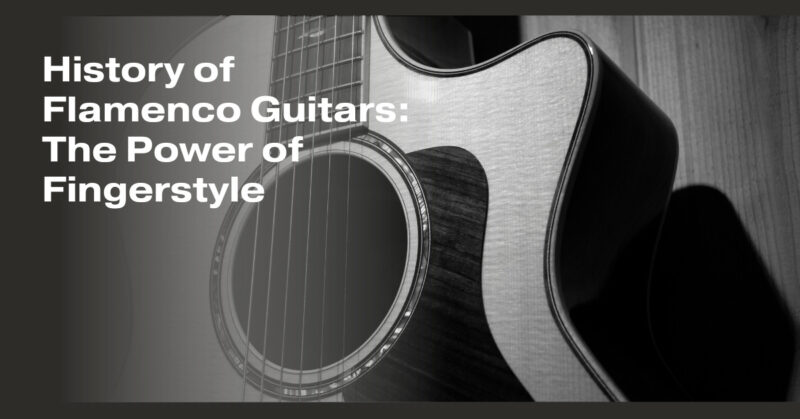Flamenco guitar is a distinct style of guitar playing that originated in the Andalusian region of Spain. It is characterized by its passionate, rhythmic, and highly expressive nature. The history of flamenco guitars and the power of fingerstyle playing in this genre have deep cultural roots and a fascinating evolution.
1. Origins:
- The roots of flamenco guitar can be traced back to the fusion of various musical influences in Spain, including Moorish, Jewish, Gypsy, and Spanish folk traditions.
- Early forms of flamenco music emerged in the late 18th century, with singers (cantaors), dancers (bailaors), and guitarists (tocaors) playing a significant role.
2. Evolution of Flamenco Guitars:
- The guitar used in early flamenco music was the traditional Spanish guitar, which had gut strings and a smaller body compared to today’s flamenco guitars.
- In the late 19th century, Spanish luthiers, particularly those from Andalusia, began crafting guitars specifically for flamenco music. These flamenco guitars featured several design changes to enhance the genre’s unique characteristics:
- Lighter Construction: Flamenco guitars had thinner tops and less internal bracing to achieve a more percussive, responsive sound.
- Lower Action: The string height (action) was set lower to facilitate rapid fingerstyle and strumming techniques.
- Tap Plates: Some flamenco guitars incorporated tap plates or golpeadores on the top to protect against percussive tapping by the fingers.
- Brighter Sound: Flamenco guitars were designed to produce a bright, cutting tone with quick decay, which suited the needs of dancers and singers.
- Prominent luthiers like Antonio de Torres and Santos Hernandez made significant contributions to the development of flamenco guitar design.
3. Role of Fingerstyle Technique:
- Fingerstyle playing is a hallmark of flamenco guitar. It involves intricate use of the fingers and nails to produce a wide range of sounds, from delicate to percussive.
- Key fingerstyle techniques in flamenco include picado (rapid single-note runs), rasgueado (flamboyant strumming patterns), alzapúa (thumb technique), and tremolo (rapid fingerpicking).
- The use of fingernails is crucial for achieving the characteristic brightness and crispness of flamenco guitar tones.
4. Notable Flamenco Guitarists:
- Many legendary flamenco guitarists have left an indelible mark on the genre, including Paco de Lucía, Tomatito, Vicente Amigo, and Sabicas. Their virtuosic fingerstyle playing and innovations have inspired generations of guitarists.
5. Modern Flamenco Guitars:
- Contemporary flamenco guitars continue to incorporate elements of traditional design while embracing modern innovations in materials and construction techniques.
- Some flamenco guitars feature cutaways for easier access to higher frets, electronics for amplification, and a combination of traditional and synthetic materials to enhance durability and playability.
6. Flamenco’s Global Influence:
- Flamenco music and its guitar style have spread worldwide, influencing various music genres and contemporary fingerstyle guitarists who incorporate flamenco techniques into their playing.
Flamenco guitar’s history and the power of fingerstyle playing reflect a rich tapestry of cultural influences, innovation, and passionate expression. It continues to captivate audiences and inspire guitarists with its fiery rhythms and emotive melodies. Whether you’re a seasoned player or just beginning, exploring the world of flamenco guitar and its fingerstyle techniques can be a deeply rewarding musical journey.


